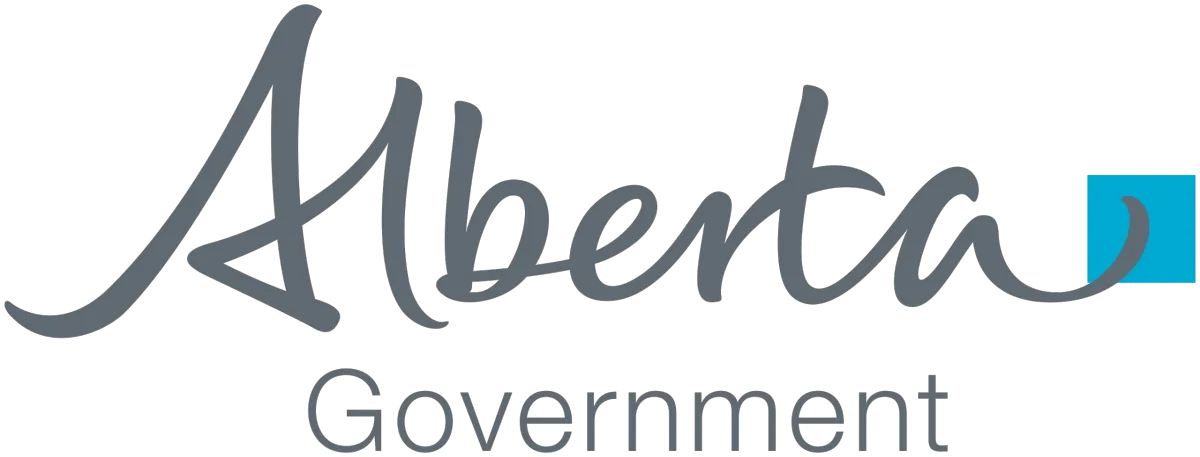Get a Safety Manual. Today.
Create your Occupational Health & Safety Program in days with pre-built Policies and Manuals.
International Safety Compliance

OSHA
United States

WorkSafeBC
British Columbia

OHS
Alberta
A vision for fast and easy OHS programs
An Occupational Health and Safety Program is critical for any company to ensure a safe and healthy workplace for employees and to comply with regulatory requirements. Implementing a comprehensive program helps to identify and mitigate workplace hazards, improve workplace safety, and protect employees from harm.
Avoid fines and interruptions
Safety Policies and Manuals
Customizable to your business
Budgeting that suits you
Safety Compliance has
never been this easy

Save Time
Writing a comprehensive safety manual from scratch is time-consuming, especially for those without extensive knowledge of workplace safety regulations. How many hours can you or your team spare to study?
Skip the writing and get straight into editing to tailor each policy to how your business runs.

Save Money
Creating a safety manual from scratch is expensive, and it may require hiring outside experts. Save money by purchasing a template and avoiding months of employee time and wages. Do the math and see for yourself.
Simply edit a comprehensive and pre-built manual to tailor it to your specific company.

Save Worry
Our safety manuals are developed by experienced professionals who have a deep understanding of workplace safety regulations. Avoid more fines and violations by fast-tracking your safety program with pre-built manuals and policies.
You're days away from having a safety manual that's ready to use at your company right away.
Get your Safety Program
Up and Running
Flexible
Cherry-pick policies
Bundle policies
Build your Safety Manual
Customized
See your company name
See your company brand
Be Safety Compliant
Compliant
Get manuals and policies
Get safety training
Get a Safety Program
Made for your Industry
With a pre-written and customizable template, you can quickly tailor it to your specific business. Save time, money, and people compared to writing one from scratch.
Whatever your industry, get compliant in days with our comprehensive and customizable Safety Manuals, OHS Programs, Safety Polices. Remove the Policies that don't apply and build your own Manual or bundle it with training to make it a Program.

Electrical, Heating, and HVAC

Construction, Fabrication, and Manufacturing

Carpentry, Concrete, and Masonry

Roofing, Siding, and Home Services

Plumbing, Pipefitting, and Sprinklerfitting

Landscaping, Grounds Maintenance, and Agriculture
Don't see yours?
Pre-Built
Policies and Manuals
MOST FLEXIBLE
Safety Policy
$49
Unlimited use
Branded? no
Files PDF
Choose from 30+ WorkSafeBC OHS Policies and receive it to your inbox instantly. Pick only the Policy you need, when you need it. New Policies added often.
Alberta OHS and OSHA Policies coming soon
BEST VALUE
Safety Manual
$1149
Unlimited use
Branded? no
Files PDF
Get a Pre-built WorkSafeBC Safety Manual. Simply edit it with your team to suit it to your specific business.
Why write it from scratch? Get all 34 WorkSafeBC Policies in a single Manual file.
Alberta OHS and OSHA Manuals coming soon
EASIEST EDIT
Safety Manual+
$1549
Unlimited use
Branded? yes
Files PDF + Doc
Get a Pre-built WorkSafeBC Safety Manual with your company's branding. Choose which Policies to exclude.
Why write it from scratch? Get all 34 WorkSafeBC Policies in a single Manual file. Receive an additional Google Doc for easy editing.
Alberta OHS and OSHA Manuals coming soon.
TOTAL PACKAGE
Safety Program
$6999
Unlimited use
Branded? yes
Files PDF + Doc
COMING SOON -
Get a Manual, pre-built employee training courses, and templates for your inspections and Joint Health & Safety Committee.
Want to make your own training?
Ask us about our online course builder.
Frequently Asked Questions
What happens if I don't have a Safety Program?
According to WorkSafeBC, if a company does not implement a safety program, they may face consequences such as penalties and fines for non-compliance with the Occupational Health and Safety Regulation. In addition, the company may also face increased risks of workplace incidents and accidents, which can result in injury or harm to workers and negative impacts on the business. By failing to implement a safety program, a company is also failing to fulfill its duty to provide a safe and healthy work environment for its workers.
If you don't implement a safety program according to OSHA, your company could face penalties and fines for failing to comply with the regulations and standards set by OSHA. Additionally, the lack of a safety program can lead to increased risks of workplace accidents and injuries, which can result in increased costs, lower productivity, and potential legal liabilities. OSHA requires employers to provide a safe and healthy work environment for their employees and failure to comply with this requirement could result in penalties, fines, and legal action.
According to Alberta Occupational Health and Safety (OHS), failing to implement a safety program can result in significant consequences, including penalties, fines, and even criminal charges. Alberta OHS has a legal obligation to ensure that all employers are providing a safe and healthy work environment for their employees. If an employer is found to have failed to implement an adequate safety program, they can be issued with fines or penalties, and, in serious cases, may even face criminal charges. This can have serious impacts on the employer's reputation and financial stability, as well as causing harm to workers. In order to avoid these consequences, employers must ensure that they have a robust and effective safety program in place that meets the requirements of Alberta OHS.
When do I need a Safety Program?
According to WorkSafeBC, an employer in British Columbia, Canada is required to have a safety program if they employ 20 or more workers. A safety program is a systematic approach to managing workplace health and safety, and it helps employers meet their legal obligations under the Workers Compensation Act and its regulations. The safety program must outline the policies and procedures that the employer has in place to manage and prevent workplace hazards and injuries.
According to the Occupational Safety and Health Administration (OSHA), a safety program is needed in order to help prevent workplace injuries and illnesses. OSHA requires that employers take steps to eliminate or reduce workplace hazards to ensure a safe and healthy work environment.
The specifics of when a safety program is required by OSHA may vary depending on the size of the organization, the industry, and the types of hazards present in the workplace. Employers with 10 or fewer employees may be exempt from some recordkeeping requirements, but still have a responsibility to provide a safe workplace for their employees. Employers with 11 or more employees are generally required to establish a safety program and maintain accurate records of workplace injuries and illnesses.
According to Alberta Occupational Health and Safety (OHS), employers are required to have a safety program in place if they have 20 or more workers or if they operate in a high-risk sector, such as construction. The purpose of the safety program is to identify and control workplace hazards, prevent injury and illness, and promote a safe and healthy work environment for all employees. The safety program should be tailored to the specific needs and risks of the workplace and include the following elements: hazard assessment, hazard control, emergency preparedness, training, and regular review and updating.
Why do I need a Safety Program?
A safety program is necessary in a workplace to prevent accidents and illnesses, ensure compliance with health and safety regulations, and foster a culture of safety among employees. It helps to identify and manage potential hazards, establish procedures for reporting incidents, and provide training and resources for preventing incidents from occurring.
A comprehensive safety program can reduce the number of workplace accidents and illnesses, minimize financial losses due to work-related incidents, and improve overall employee morale and productivity.
Learn More on the Safe Bet Blog

What are the requirements for personal protective equipment (PPE) in my industry?
The requirements for personal protective equipment (PPE) can vary depending on the industry and the specific hazards present in a workplace.
In general, employers are responsible for identifying the hazards in the workplace and providing appropriate PPE to protect workers from those hazards. It's important to note that PPE should always be used as a last resort, after other measures to eliminate or control hazards have been implemented. In addition, workers must be properly trained on the use, maintenance, and storage of PPE, and PPE must be properly maintained and regularly inspected to ensure that it is in good condition and able to provide the necessary protection.
Some Common Types of PPE Include:
Eye and Face Protection,
Hearing Protection
Respiratory Protection
Hand protection
Foot protection
Head Protection
WorkSafeBC has specific requirements for PPE in various industries, and the specific requirements can be found in their regulations and guidelines. To find information on WorkSafeBC about PPE for your industry, you can start by visiting the WorkSafeBC website and look for PPE requirements and guidelines for your specific industry. You can also look for industry-specific guidelines and resources provided by WorkSafeBC, such as bulletins, guidelines, and regulations. Additionally, you can contact WorkSafeBC directly to inquire about PPE requirements for your industry or seek guidance on PPE compliance.
Here's some general guidance for setting up the policies, practices, and training that will help you get compliant on PPE:
Conduct a hazard assessment to identify potential hazards and determine the appropriate PPE required.
Provide the necessary PPE to all employees and ensure that they know how to use it properly.
Train employees on the proper use, maintenance, and disposal of PPE.
Regularly inspect PPE to ensure it is in good condition and replace any damaged or worn equipment.
Make sure that PPE is comfortable and fits properly to encourage consistent use.
Encourage employees to report any issues or concerns with PPE.
Establish procedures for cleaning and disinfecting PPE to prevent the spread of infectious diseases.
Ensure that PPE is properly stored and easily accessible for employees.
Provide appropriate signage to indicate the required PPE in specific areas.
Continuously review and update the PPE program as necessary to ensure that it remains effective and relevant to the hazards present in the workplace.
Training is an essential part of all safety compliance. The best way to train employees on PPE is through a combination of formal training sessions and ongoing reinforcement. Here are some tips:
Provide formal training: Provide training sessions to educate employees on the importance of PPE, when to use it, how to wear it properly, and how to maintain it.
Demonstrate proper use: Demonstrate how to put on, take off, and adjust PPE correctly, and have employees practice the procedures until they are comfortable with them.
Provide visual aids: Use posters, videos, or other visual aids to reinforce the importance of PPE and demonstrate proper use.
Emphasize the risks: Explain the specific risks associated with the job and how PPE can protect employees from those risks.
Encourage questions: Encourage employees to ask questions and seek clarification if they are unsure about any aspect of PPE.
Reinforce the message: Provide ongoing reminders and reinforcement of the importance of PPE, such as through regular safety meetings, posters, and other communications.
Lead by example: Ensure that managers and supervisors also wear appropriate PPE and set a positive example for employees to follow.
To learn more about Personal Protective Equipment, click here.
Related Articles
What does safety compliance mean?

Hours
Mon – Fri
9:00am – 5:00pm EST
Copyright 2023 . All rights reserved
Powered by Loyalist - try it for free
Launched by Wolfmother Consulting - operations others will envy





